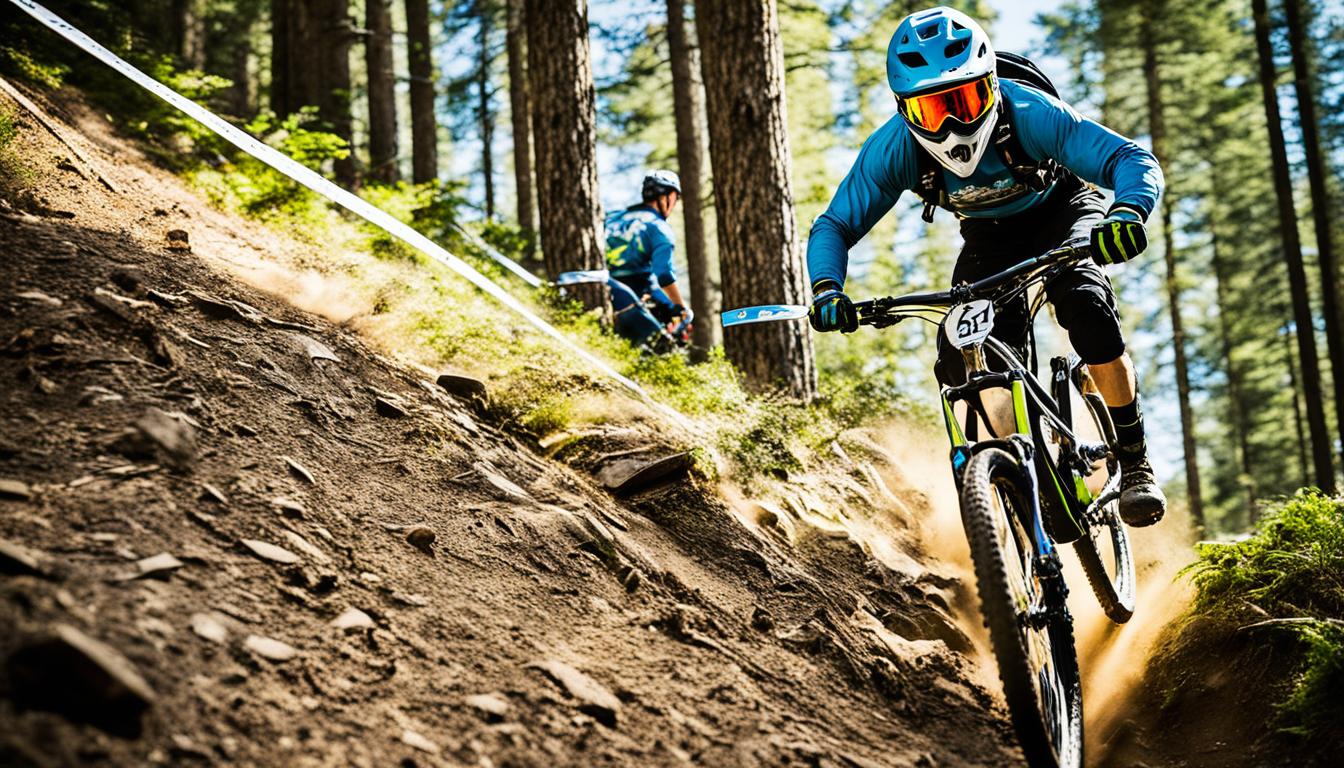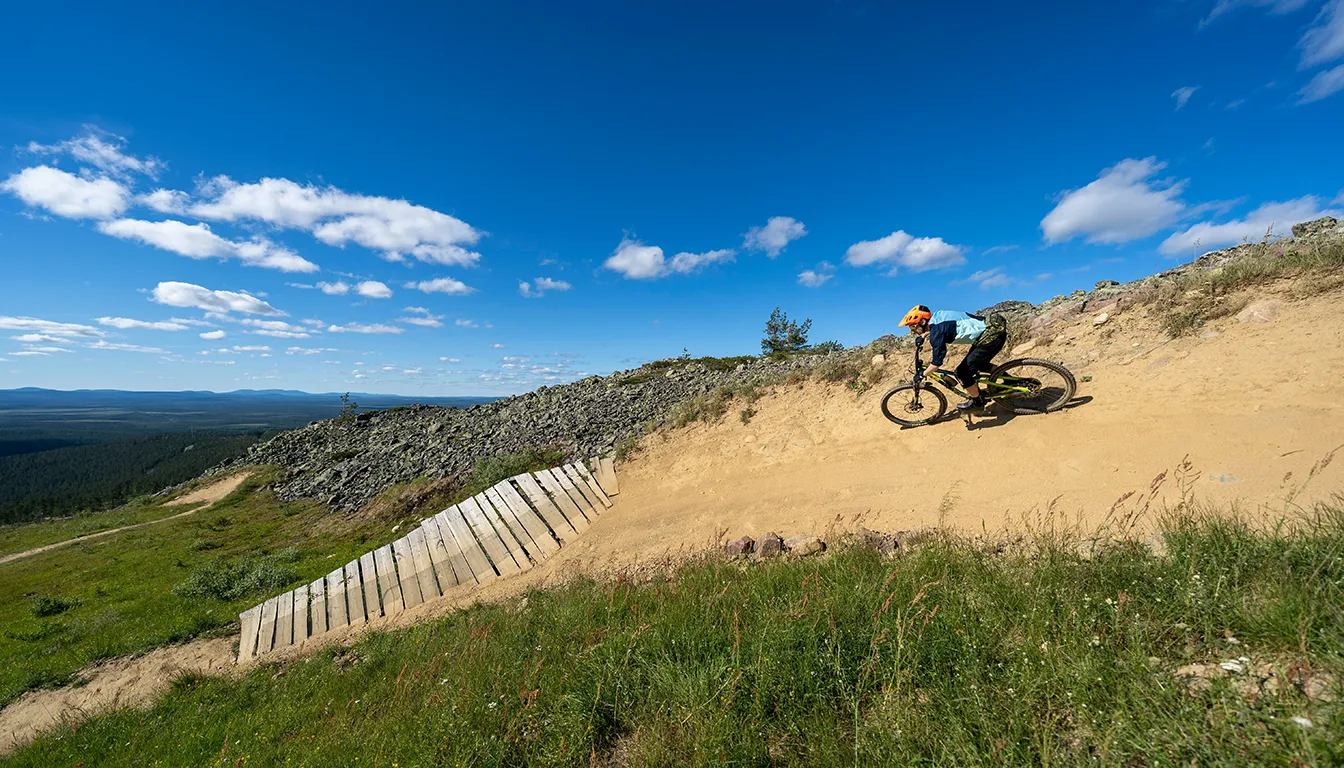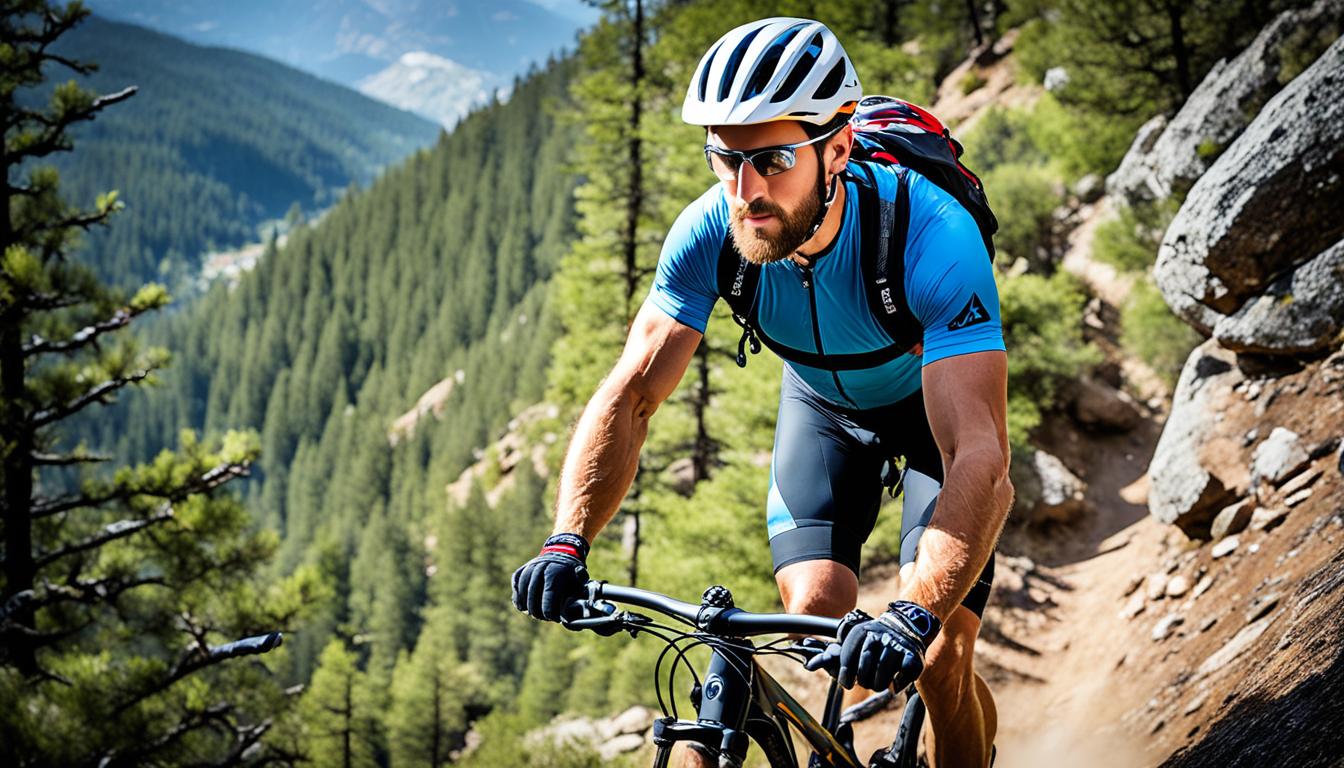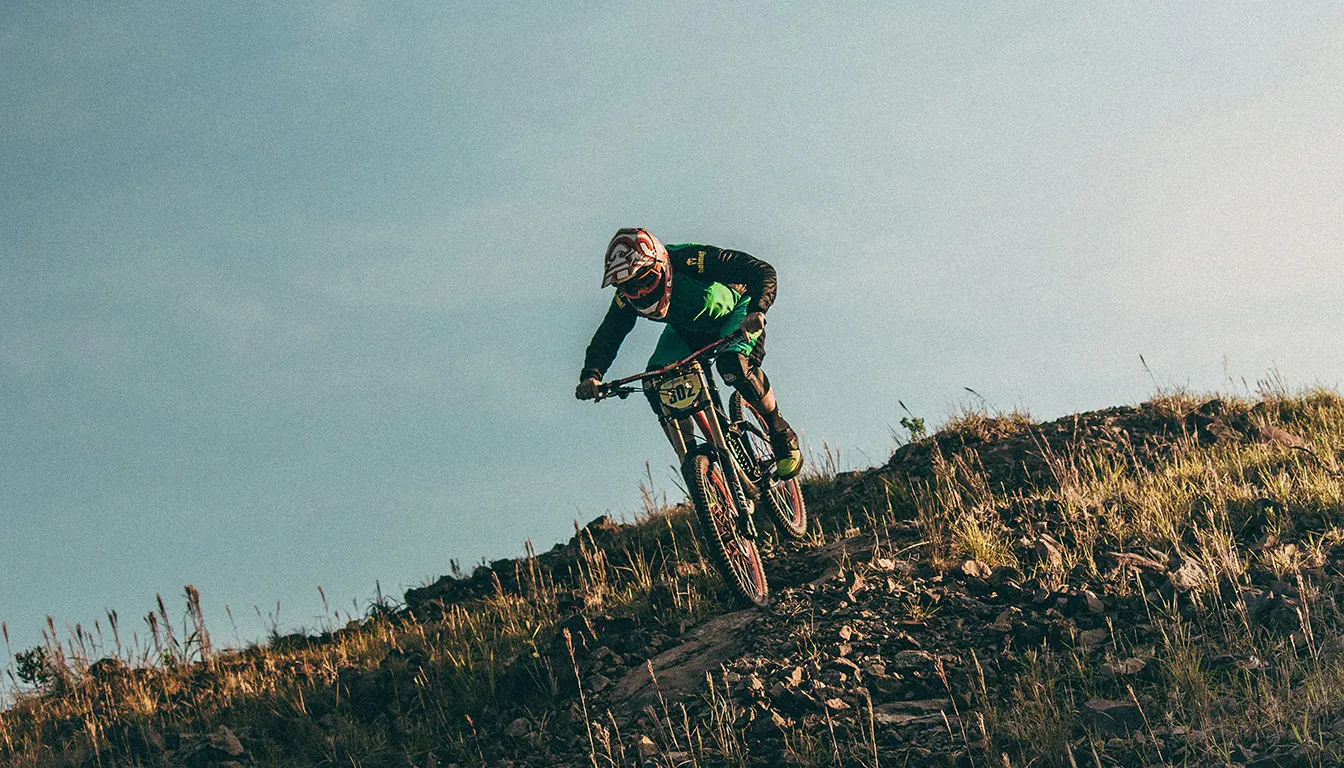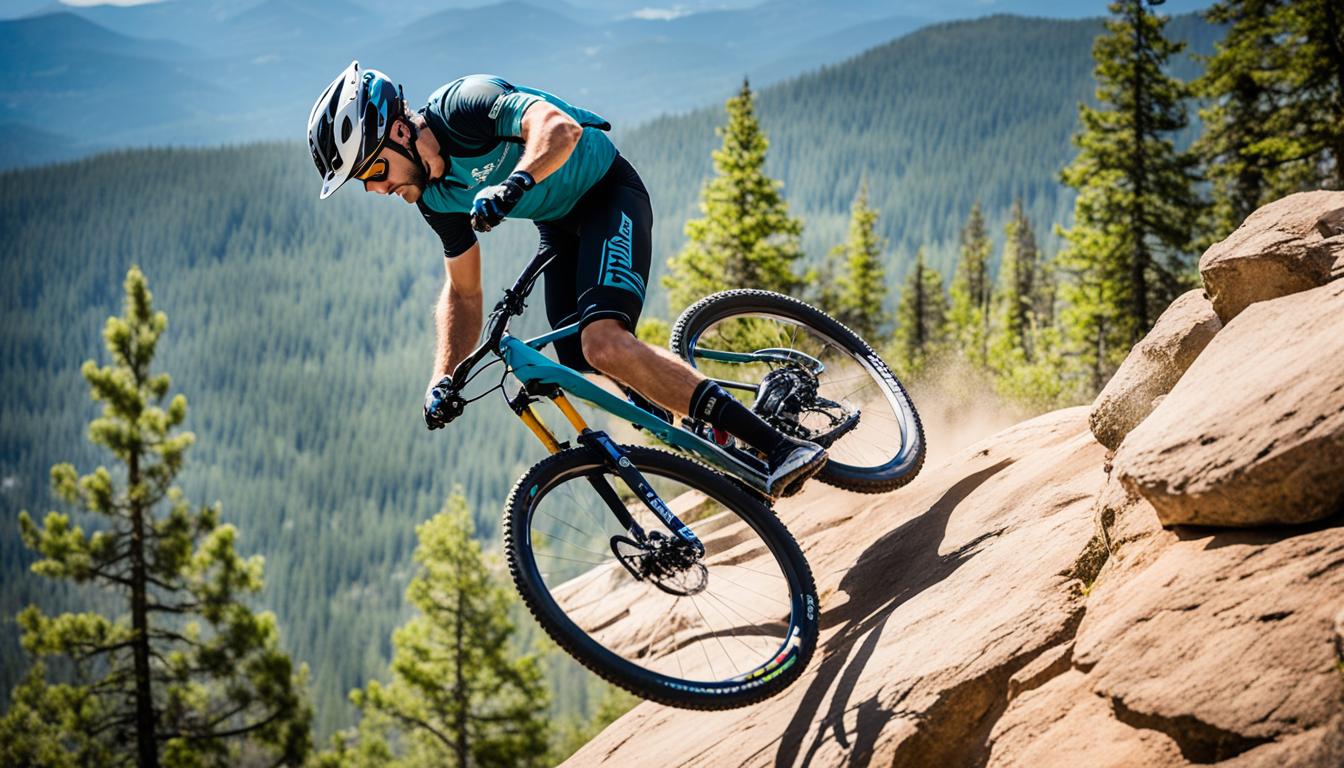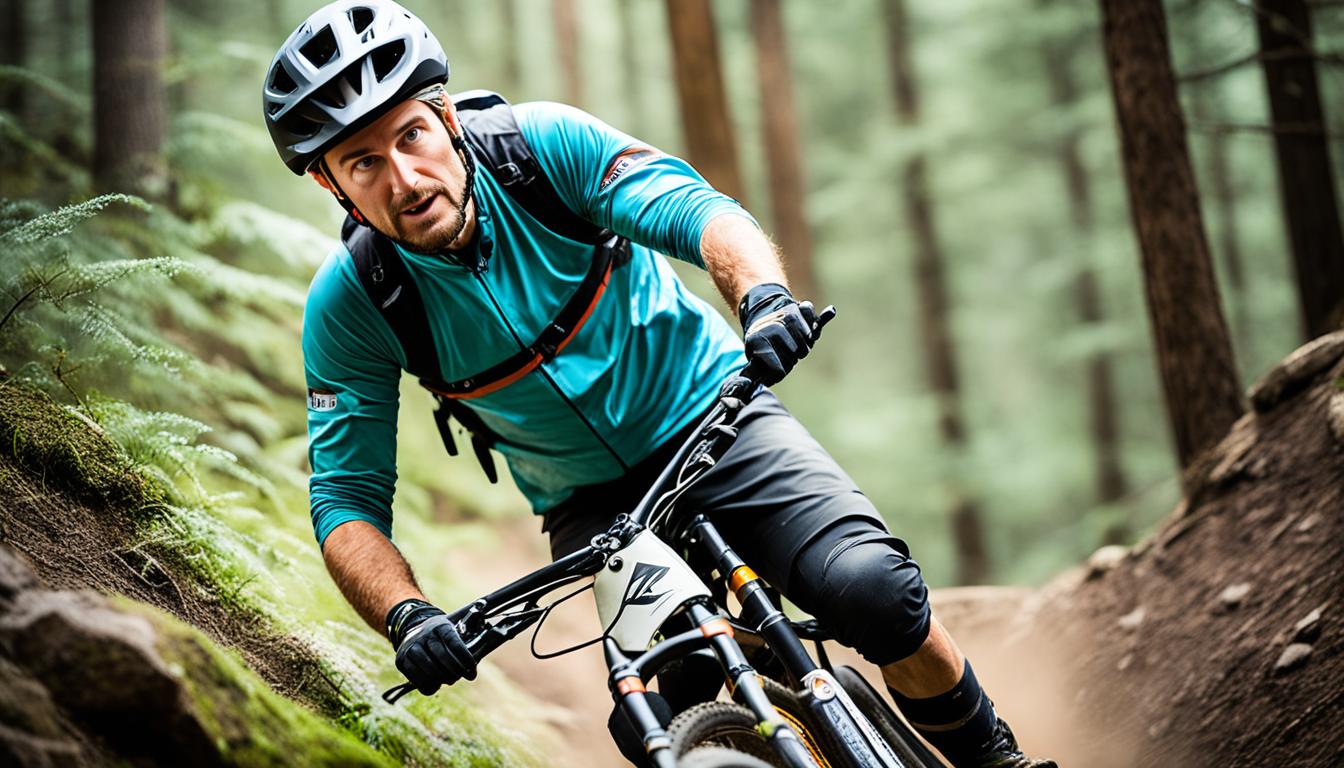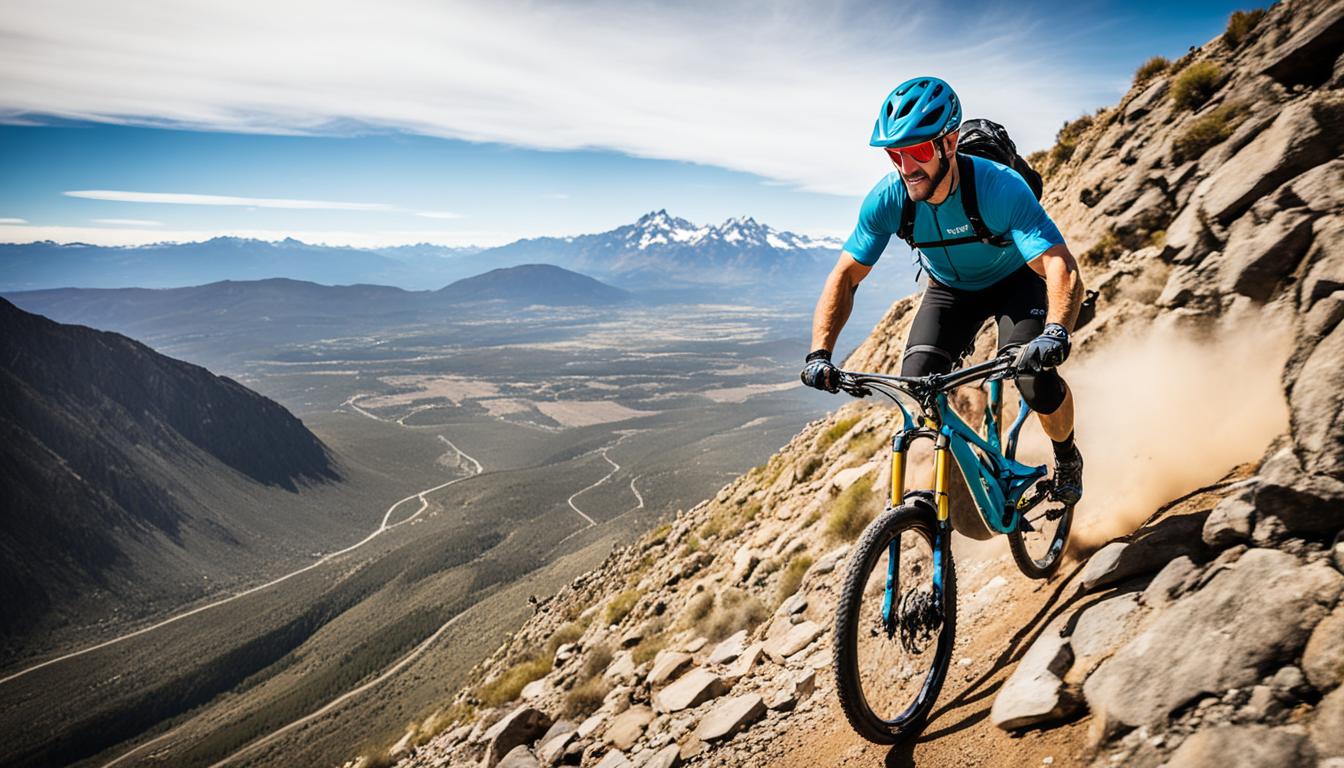Freeride mountain biking is more than a sport; it’s an adventure. It values creative expression and skills over just being fast. This sport allows you to explore various terrains. It lets you show off your freeriding skills in an exciting way.
For anyone starting or already loving this sport, knowing the basic freeride tips is vital. These tips include focusing on safety, choosing the right gear, and learning key techniques. By understanding these areas, you can improve your rides. You’ll enjoy a mix of fun and safety on the trails.
Understanding Freeride Mountain Biking
Freeride mountain biking is a special part of cycling. It values creativity and skill more than just speed. It’s different from downhill biking because it uses steep slopes and natural features. Riders show their style with tricks and stunts.
The history of freeride biking started in the late 1990s and early 2000s. Places like British Columbia and Utah were key spots. Events like Red Bull Rampage show the excitement of freeriding. They highlight amazing talent in breathtaking locations.
Freeride biking is not the same as downhill. It’s about being creative on tough terrains, not just fast. Bikes for freeriding are built to last and have big wheels. This helps with stability and tricks in the air. Riders often use flat pedals to do tricks easier. This mix of history, style, and skill is why freeride biking is so popular.
Essential Gear for Freeride Mountain Biking
Freeride mountain biking is thrilling but requires the right gear for safety and better performance. Choosing the right bike and shoes is key to enjoying the sport.
Choosing the Right Bike for Freeriding
Freeride mountain bikes need special features for big jumps and drops. Bikes should have:
- Lighter frames for agile tricks.
- Strong build for tough landings.
- Wheel sizes of 26” or 27.5” for better control in the air.
Though downhill bikes are common, freeriders often prefer bikes with specific qualities for technical terrains. Knowing what to look for in a bike helps improve your riding.
Footwear: Flat versus Clipless Pedals
Footwear choice matters a lot for successful rides. Freeriders usually choose flat pedals for their freedom and ease of use during tricks. This choice helps with safety on tricky descents.
In contrast, clipless pedals offer more security on tough tracks like rock gardens, which is great for downhill rides. Though they may restrict movement, their grip can help keep you stable. Choosing the right shoes for your pedals can make riding more comfortable and controlled.
Remember, it’s not just about the bike and shoes. Wearing protective gear like knee pads and full-face helmets is vital for safety. To get better at freeride mountain biking, check out expert advice on downhill biking gear. Or, find great mountain biking trails at MTB Freak.
Key Techniques for Freeride Mountain Biking
Freeride mountain biking is all about skill, technique, and adaptability. Riders must learn various techniques to get better. Knowing how to position your body is key, especially for jumps and drops. The right techniques really help a rider improve.
Body Positioning on Jumps and Drops
For jumps, getting your body position right is essential. You should stay centred and keep upright. Your elbows and knees should be slightly bent. This helps you absorb the shock when you land.
Before landing a jump, shift your weight back. This helps keep you balanced and lessens the shock. Getting good at drops makes for smoother landings and better control.
Maintaining Control During Tricks
Controlling your bike during tricks is crucial for freeriders. Adopt a ‘pumped’ stance and use your body to steer the bike in the air. This means being precise with your arm and leg movements. Keeping an eye on where you’ll land lets you prepare for the bike’s reaction. This boosts your performance and confidence in doing tricks.
Freeride Mountain Biking Tips for Building Skills
Getting better at freeride biking is key to doing well on the trails. When you train in different places, it helps a lot. You learn to handle dirt, gravel, and rock. This makes you flexible and ready to face any challenge confidently.
Practicing on Different Terrain
Trying out various places makes biking more fun. Each type of ground wants you to use skills in a special way. Focus on getting good on different surfaces. Mastering them helps you face tricky trails head-on.
Developing a Good Sense of Timing
Timing is super important in mountain biking. It is about knowing the best speed for jumps. With a lot of practice, you get this timing right. This means you land safely and ride better.
Safety First: Protecting Yourself While Riding
In freeride mountain biking, safety is the top priority. Having the right protective gear for freeride biking lowers injury risks. It’s vital to choose safety equipment that protects important body parts while improving your ride. Gear like full-face helmets, knee and elbow pads, gloves, and back protectors are crucial. The right gear protects you but also allows you to move freely, which is key for a safe and enjoyable ride.
Essential Protective Gear
Wearing a helmet can reduce serious head injuries by up to 70%. This makes helmets a must-have for safety. Full-finger gloves also help with grip and protect your hands if you fall. Other essential items include:
- Knee and elbow pads for protection during tough rides
- A first aid kit with plasters, dressings, and wipes
- Hydration packs with two to three litres of water for hydration
- Tools like a puncture repair kit for bike fixes on the go
Keeping tyres properly inflated helps avoid accidents caused by punctures. Energy gels are great for a quick energy boost on long rides.
Understanding Risk Management
Managing risks in mountain biking means knowing your limits and making smart choices about the terrain. A respect for potential dangers like steep drops or sharp turns helps manage risks. Always plan your rides, considering things like weather and trail difficulty. Being well-prepared reduces the chance of accidents and makes biking more enjoyable.
With the right gear and a focus on safety, freeride mountain biking can be safer and more fun. For beginners wanting to improve, learning key techniques boosts confidence and ability on the trails.
Perfecting Your Jumping Technique
Jumping is key in freeride mountain biking. It can really boost a rider’s skills. Focus on managing energy during takeoff. This means pumping the bike to get lift. It helps control momentum for smoother jumps.
Doing jump drills builds confidence and skill. Start with small jumps. This helps perfect technique safely. Here are essentials for mastering freeride jumps:
- Visualisation: Picture a successful jump before trying it. This prepares your mind.
- Compression: Bend your knees as you take off. This creates the push needed for lift.
- Speed Management: Keep the right speed for smooth takeoff and landing.
- Landing Techniques: Different surfaces need different landing skills. Practice landing gently to stay in control.
- Table-Top Jumps: These are less risky for practice. A missed landing here is safer.
- Equipment Setup: Adjust your saddle and use grippy pedals. This affects jump quality.
- Protective Gear: Always wear a helmet and pads for knees and elbows. They reduce injury risk.
- Inspecting the Jump: Check the jump and landing area before trying. This ensures safety.
Slowly add these practices to your routine for better jumping skills. Try different speeds and compression depths. Find what works best for you.
Freeride Mountain Biking Tips for Trail Riding
Knowing how to navigate trails well makes freeride biking fun. It’s about choosing paths that boost speed and keep you safe. Balancing your weight over the rear wheel helps in tricky parts. By following freeride trail tips, like adjusting speed and how you position yourself, your trail rides will improve.
Navigating the Terrain Effectively
Handling changing trail conditions is key. Stay relaxed to get over hurdles smoothly. Working on your technique will make you better. Practise in different places to learn how various grounds respond. This way, you’ll get better at technical riding skills.
Mastering Switchbacks and Technical Sections
Switchbacks are tough but can be mastered. It’s all about how you balance and steer through sharp corners. Start by practising in safe places to build your confidence. Keep practicing to get better at mastering switchbacks. For more help, check out resources like freeride trail tips. They offer advice on tackling tough parts of the trails.
Conclusion
To master freeride mountain biking, mix knowledge, readiness, and the right attitude. It’s crucial to pick quality equipment and practice key skills. This approach makes mountain biking both enjoyable and rewarding. Learning to navigate routes, adapt to terrain, and follow safety tips helps avoid accidents on tough tracks.
When freeriding, always look ahead by 3-6 metres to respond quickly. Good braking technique is also vital. Use one finger for better control, especially on steep drops. Regular braking keeps your gear in good shape and ensures safer rides.
Embarking on freeride mountain biking adventures? Boost your fitness with activities like swimming or running. Strength training is also beneficial to enhance stamina and prevent injuries. With these strategies and ongoing skill development, you’re set for exciting UK trail experiences, improving your riding enjoyment.
FAQ
What is freeride mountain biking?
Freeride mountain biking focuses on style over speed on varied terrains. It’s not like downhill biking, which has a set course. Instead, freeriders take on steep slopes and use creative features.
How do I choose the right bike for freeride mountain biking?
Look for a bike that has a light frame and can handle rough landings. Many riders like 27.5” or 26” wheels. They make controlling the bike in the air easier.
What type of pedals should I use for freeride biking?
Flat pedals are popular with freeriders. They let your feet move freely and make it easier to do tricks. However, clipless pedals give more security on downhill rides. Choose shoes that work well with your pedals.
What are some key techniques for jumping in freeriding?
To jump well, ‘pump’ the bike for lift and land softly. Practice drills that gradually increase in difficulty. This builds confidence and skill.
How important is safety gear in freeriding?
Safety gear is crucial. You should wear a full-face helmet, knee and elbow pads, gloves, and a back protector. It’s important to choose gear that protects you but still lets you move freely.
What should I consider when practising on different terrains?
Riding on dirt, gravel, and rock teaches you different skills. Getting to know each surface improves your adaptability and technique.
How can I improve my timing for jumps and transitions?
Good timing in freeriding comes from practice. Learn to judge speed and distance right for jumps. This will help you make successful leaps.
What strategies can I use for navigating trails effectively?
Pick lines that combine speed and safety. Stay balanced by keeping your weight over the rear wheel. This helps control the bike in difficult spots.
How do I manage risks while freeride mountain biking?
Being aware of risks is key. Know your limits and plan your rides carefully. Respect the dangers and make smart decisions to stay safe.
